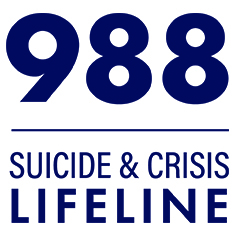Supporting Survivors of Traumatic Events
April 12, 2019

A few weeks ago, we witnessed the tragic suicide deaths of several individuals who had been affected by school shootings. The national suicide prevention field was quick to respond with press releases highlighting help and prevention resources, and consultation with national news media to help them shape their coverage of these deaths. In the aftermath of these losses, let’s reflect on how we in the suicide prevention field can leverage our collective strengths to support schools and communities after traumatic events. Ensuring suicide prevention and postvention supports are in place can help better support survivors of shootings and other mass trauma, and reduce the chance of further loss.
First, we can bring resources, experience, and knowledge to help schools and communities mourn and process these and other recent suicide losses. Following the suicide deaths of individuals who have experienced trauma, we can offer updated tools to help the affected schools respond, including guidance on safe ways for students and the school community to grieve. We can also help communities and states activate existing resources to ensure suicide loss survivors receive the support they need. Strong connections with clinical and peer supports can help those left in the wake of this very unique and complex kind of loss.
These recent suicide deaths have reminded us of the lasting effects of traumatic events, and the long-term impact that post-disaster traumatic stress may have on suicide risk. Studies have shown that suicidal thoughts and behaviors are more likely to emerge several months after experiencing a traumatic event than in the immediate aftermath. How can we use our understanding of suicide postvention to support a community after other kinds of sudden and traumatic loss? Our field brings best practice guidance on how to develop comprehensive prevention programs in schools, including policies and systems to identify and support students who may be at risk. We can use what we know about school-based suicide prevention to help school communities that have experienced a shooting or other traumatic event. Our knowledge and resources can help equip students, teachers, school mental health counselors, other school staff, and parents to detect suicide risk and support those in distress.
Given what we know about improving suicide care in health systems, how can we bring a trauma-informed and culturally competent approach to health care settings to support survivors after mass shootings? Let’s leverage our connections with emergency departments, primary care practices, and behavioral health providers to better support schools and students affected by traumatic events. When students are struggling in the aftermath of a traumatic event, we can help ensure trained clinicians are working with them and their families to keep them safe, including talking about lethal means safety.
Finally, we can make a significant impact on safe reporting and reducing the spread of despair through news media. In recent years, there has been a shift from sensational, oversimplified stories to more nuanced coverage that follows the national reporting recommendations. Increasingly, reporters are highlighting real stories of hope and recovery and including crisis resources in their coverage. When high-profile suicides occur, it’s especially important that suicide prevention messengers continue to emphasize hope and recovery in our conversations with the media. By helping reporters feature the stories of those who have survived traumatic events, and by reminding audiences about the resources available to them, we can counteract the sense of hopelessness that can result from multiple suicide deaths.
When school shootings, natural disasters, or other mass tragedies occur, the public is quick to respond with dismay and sorrow, and there is often an initial outpouring of support for the survivors. But as attention dissipates, those left behind may continue to struggle with their trauma and loss—in many cases alone. The suicide prevention field is uniquely poised to put into place lasting supports for those who are suffering after a traumatic event. Let’s start thinking about how we can use the resources, tools, and knowledge at our disposal to stay connected with them over the long term. Together with other community programs and supports, we can be part of supporting survivors in finding hope and help.
